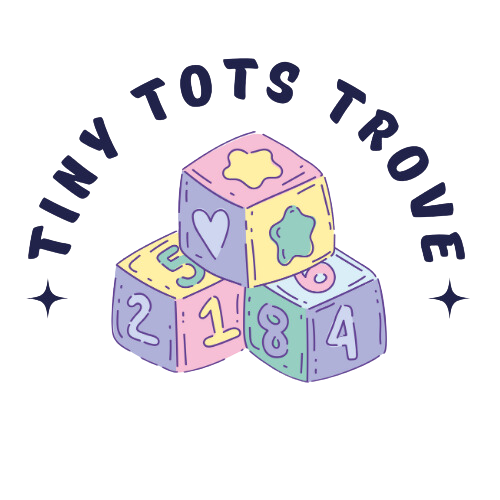
You might have heard people say that newborn babies just sleep all the time. While they do sleep a lot, they are also awake for short periods, and it's crucial to make those moments count. On average, a newborn sleeps between 14 and 17 hours within a 24-hour cycle, with some babies sleeping up to 19 hours, waking every 2 to 3 hours to feed. After feeding, they may stay awake for 30 to 90 minutes. Here are five meaningful ways to play with your newborn during these wakeful moments.
1. Crib Mobiles
Crib mobiles are perfect for introducing between 2 and 4 weeks of age and can be used up to 3 months. Choose a mobile that sways gently with natural ventilation, stimulating vision and enhancing tracking, helping the baby learn to focus.
Points to Remember:
- Crib mobiles are for when the baby is awake and active, not for lulling them to sleep.
- Avoid shaking the mobile to get the baby's attention.
- Place the mobile about 8 inches above the baby's chest.
- Use the mobile in the crib, play gym, or hang it anywhere in your home.
- Switch mobiles every two weeks or when the baby loses interest.
Timeline for Introducing Montessori Mobiles:
- Black and white mobile: 2 to 5 weeks
- Colourful mobiles: 8 to 12 weeks
- Bell chime: 3 months+
2. Visual Stimulation Cards
Newborns can only see objects 8 to 12 inches away and their vision is blurred, limited to black and white. High contrast images help babies focus and improve eyesight. Research shows that exposing babies to high contrast images increases their interaction with the environment, stimulates the brain, builds focus and concentration, sparks imagination, and develops visual sensory pathways.
Using Visual Stimulation Cards:
- Make or print these cards at home or get them as part of the Curious Crate Level 1 and 2 Montessori Boxes.
- Choose cards that are a good size to display anywhere.
- Place the cards at a close distance rather than flashing them.
- Use them during nappy changes, awake time, in the car seat or pushchair, during a massage, or while feeding.
3. Tummy Time
Tummy time is essential for a baby's development and is recommended once the umbilical cord stump falls off. Always consult with your paediatrician before starting tummy time.
Tips for Tummy Time:
- Place your baby on their back, then gently roll them to one side with their hands tucked under their shoulders.
- Mimic their womb position by moving their heads to one side.
- Place high contrast cards about 8 inches away from their face.
- Use a mirror, high contrast objects, or books to keep their interest.
- Once your baby has some head and neck control, encourage them to lift their head and chest by moving these objects in front of them.
4. Black and White Treasure Basket
Gather black and white toys or objects from around your house, such as a panda, penguin, cow, or any fabric you may have. Cloth books, rattles, and play scarves are great for grabbing your baby's attention. Having a ready basket makes it easy to engage with the baby when awake and is convenient to move along with the baby.
5. Rattles
Rattles help teach infants new skills. Initially, caregivers hold the rattle for the baby to focus on. Around 2 months, the baby starts to follow the rattle from side to side, learning to track. By 3 months, the baby can hold the rattle themselves, eventually bringing it to their mouth, an important developmental milestone.
Things to Remember When Choosing a Rattle:
- Light in weight
- Small in size
- Rounded edges
- Natural material
- Safe to mouth
- Neutral colours
- Soft sounds
Benefits of a Simple Rattle:
- Visual stimulation
- Tracking
- Focus and concentration
- Auditory stimulation
- Whole hand grip
- Teether
- Soother
Montessori Play Box
Preparing for a newborn can be overwhelming. The Curious Crate Level 1 Montessori Box for newborns includes a variety of high contrast provocations like a crib mobile, picture cards and stand, textured ball, rattles, crinkly mat, and a guide on how to use them.



